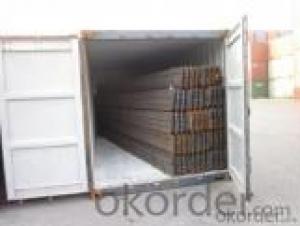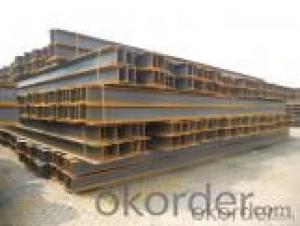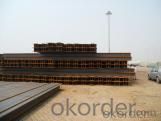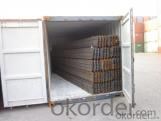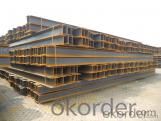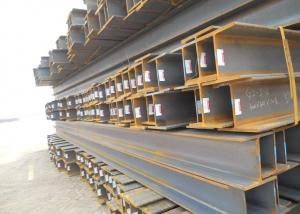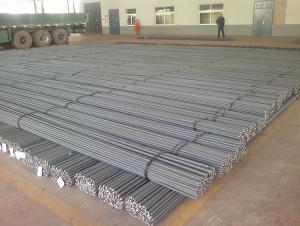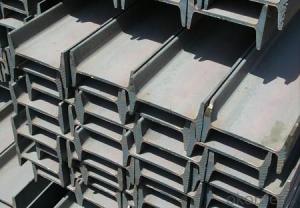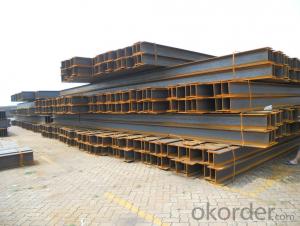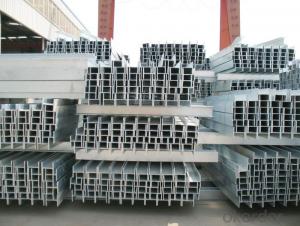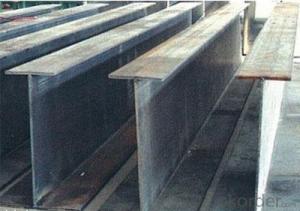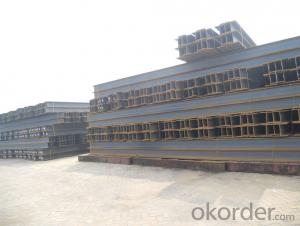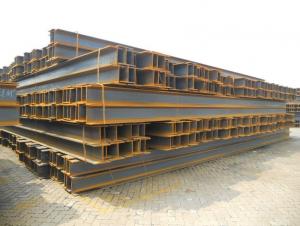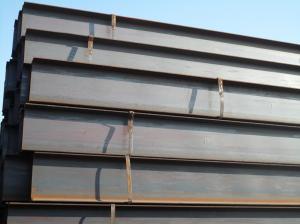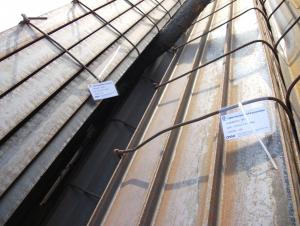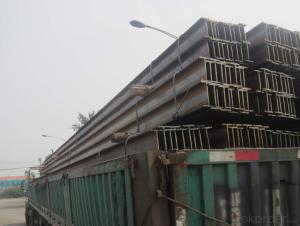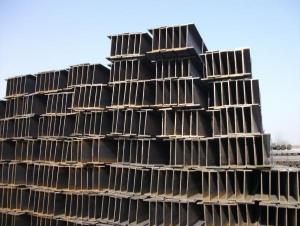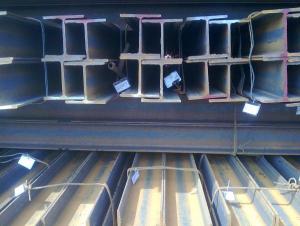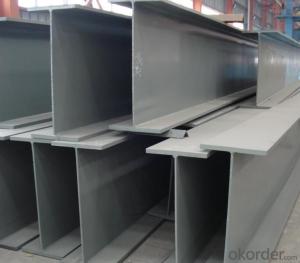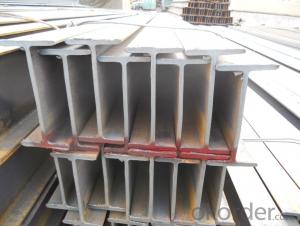Hot Rolled Steel H-beam JIS 3192
- Loading Port:
- China Main Port
- Payment Terms:
- TT or LC
- Min Order Qty:
- -
- Supply Capability:
- -
OKorder Service Pledge
OKorder Financial Service
You Might Also Like
Product Description:
OKorder is offering Hot Rolled Steel H-beam JIS 3192 at great prices with worldwide shipping. Our supplier is a world-class manufacturer of steel, with our products utilized the world over. OKorder annually supplies products to European, North American and Asian markets. We provide quotations within 24 hours of receiving an inquiry and guarantee competitive prices.
Product Applications:
Hot Rolled Steel H-beam JIS 3192 are ideal for structural applications and are widely used in the construction of buildings and bridges, and the manufacturing, petrochemical, and transportation industries.
Product Advantages:
Hot Rolled Steel H-beam JIS 3192 with high quality are durable, strong, and resist corrosion.
Main Product Features:
· Premium quality
· Prompt delivery & seaworthy packing (30 days after receiving deposit)
· Corrosion resistance
· Professional Service
· Competitive pricing
Product Specifications:
1. Standard: JIS 3192
2. Grade: SS400 or Equivalent
3. Length: 10m, 12m as following table
4. Invoicing on theoretical weight or actual weight as customer request
5.Payment: TT or L/C
Size and Mass of H beam:
Size (mm) | Mass (Kg/m) | Size (mm) | Mass (Kg) |
100*100*6.0 | 16.9 | 148*100*6.0 | 20.7 |
125*125*6.5 | 23.6 | 150*150*7.0 | 31.1 |
150*75*5.0 | 14.0 |
1. Packing: it is nude packed in bundles by steel wire rod
2. Bundle weight: not more than 3.5MT for bulk vessel; less than 3 MT for container load
3. Marks:
Color marking: There will be color marking on both end of the bundle for the cargo delivered by bulk vessel. That makes it easily to distinguish at the destination port.
FAQ:
Q1: Why buy Materials & Equipment from OKorder.com?
A1: All products offered byOKorder.com are carefully selected from China's most reliable manufacturing enterprises. Through its ISO certifications, OKorder.com adheres to the highest standards and a commitment to supply chain safety and customer satisfaction.
Q2: Can fit in the containers of 20fts the steel beams of 6M?
A2: No proble, we can put them into the containers in the form sideling.
Q3: What makes stainless steel stainless?
A3: Stainless steel must contain at least 10.5 % chromium. It is this element that reacts with the oxygen in the air to form a complex chrome-oxide surface layer that is invisible but strong enough to prevent further oxygen from "staining" (rusting) the surface. Higher levels of chromium and the addition of other alloying elements such as nickel and molybdenum enhance this surface layer and improve the corrosion resistance of the stainless material.
Images:

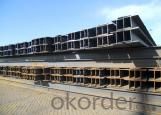
- Q: How do steel H-beams perform in earthquakes?
- Steel H-beams perform exceptionally well in earthquakes due to their high strength and ductility. The H-shape design provides superior resistance to lateral forces and bending moments, making them ideal for seismic applications. Their ability to flex and absorb energy during an earthquake helps mitigate damage and ensures structural integrity, making them a reliable choice for earthquake-resistant construction.
- Q: Can steel H-beams be used for convention centers?
- Indeed, convention centers can utilize steel H-beams. These beams are frequently employed in construction due to their robustness and capacity to bear heavy loads. Convention centers, being sizable structures, necessitate structural elements that can uphold substantial weights, including the weight of the roof, walls, and assorted equipment. Steel H-beams furnish the requisite structural integrity and resilience required to sustain the weight of these elements, thereby guaranteeing the safety and steadiness of the convention center. Furthermore, steel H-beams offer the adaptability to establish expansive open spaces without the need for excessive columns or supports, enabling the creation of versatile and customizable designs in convention center construction.
- Q: How do steel H-beams perform in seismic zones?
- Steel H-beams perform exceptionally well in seismic zones due to their inherent strength and flexibility. The design of H-beams allows them to resist lateral forces and vibrations caused by earthquakes, ensuring structural stability and minimizing damage.
- Q: What are the different welding methods for steel H-beams?
- There are several different welding methods that can be used for steel H-beams, including shielded metal arc welding (SMAW), gas metal arc welding (GMAW), flux-cored arc welding (FCAW), and submerged arc welding (SAW). Each method has its own advantages and considerations, such as the cost, speed, and quality of the weld. The specific method used will depend on factors such as the thickness of the steel, the desired strength of the weld, and the available equipment and resources.
- Q: What are the different types of steel H-beam connections used in industrial facilities?
- Industrial facilities commonly use several different types of steel H-beam connections to provide structural stability and support in large-scale construction projects. The following are some frequently used types: 1. The most commonly used type is welded connections. These involve welding the H-beams together at the joint, creating a strong and rigid connection. Welded connections are known for their high strength and durability, making them suitable for heavy-duty applications. 2. Bolted connections involve securing the H-beams together using bolts and nuts. They can be easily disassembled and reassembled, making them ideal for situations where flexibility and future modifications are required. However, they may not be as strong as welded connections. 3. Riveted connections are an older method that uses metal rivets to join the beams together. They have been largely replaced by welded and bolted connections due to their higher cost and time-consuming installation process. However, they are still used in some historical or heritage structures. 4. Moment connections, also known as rigid connections, are designed to resist bending moments and provide greater stability. Additional plates are welded or bolted to the beam ends, creating a stiffer connection that can resist rotational forces. 5. Pinned connections allow for rotation between the beams, providing flexibility in the structure. They are commonly used in structures where movement or deflection is expected, such as bridges or earthquake-resistant buildings. Pinned connections can be achieved through the use of specialized pins or bearings. 6. Shear connections transfer shear forces between the beams. They are typically made through the use of bolts or welding additional plates to the beam ends. Shear connections are crucial for ensuring the structural integrity of the H-beam system during lateral loads or vibrations. It is important to consider factors such as load-bearing requirements, structural design, project specifications, and cost when selecting the appropriate H-beam connection type. Consulting with a structural engineer or construction professional is recommended to determine the most suitable connection type for a specific industrial facility.
- Q: What are the vibration damping properties of steel H-beams?
- Steel H-beams have excellent vibration damping properties due to their high stiffness and mass. The structural design of H-beams allows them to effectively absorb and dissipate vibrations, reducing the potential for resonance and minimizing vibrations transmitted to other components or structures.
- Q: Can steel H-beams be used in data center construction?
- Steel H-beams are indeed applicable for data center construction. Their strength, durability, and versatility make them a common choice in construction projects. They possess outstanding load-bearing capabilities, rendering them suitable for supporting heavy equipment and structures within data centers. Moreover, steel H-beams allow for flexible design and effortless customization to fulfill precise construction needs. By employing them, the stability and longevity of data centers are guaranteed, which explains their popularity in the construction industry.
- Q: What are the different types of steel used for manufacturing H-beams?
- There are several different types of steel that are commonly used for manufacturing H-beams. The selection of the steel type depends on various factors such as the required strength, durability, and cost-effectiveness for the specific application. 1. Carbon Steel: This is the most common type of steel used in H-beam manufacturing. It contains mostly iron and carbon, with small amounts of other elements. Carbon steel is known for its high strength and affordability, making it a popular choice for a wide range of applications. 2. Alloy Steel: Alloy steel is a type of steel that contains additional alloying elements such as chromium, nickel, or molybdenum. These elements enhance the steel's strength, hardness, and resistance to corrosion. Alloy steel H-beams are frequently used in heavy-duty construction projects or applications that require exceptional strength. 3. Stainless Steel: Stainless steel is a type of steel that contains a minimum of 10.5% chromium, which gives it excellent resistance to corrosion and staining. H-beams made from stainless steel are commonly used in applications where hygiene, durability, and aesthetic appeal are critical, such as in the food industry or architectural structures. 4. High-strength Low-alloy (HSLA) Steel: HSLA steel is a type of steel that provides high strength and improved toughness compared to standard carbon steel. It often contains small amounts of alloying elements such as vanadium, niobium, or titanium, which enhance its mechanical properties. HSLA steel H-beams are commonly used in applications that require high strength-to-weight ratio, such as bridges or heavy machinery. 5. Weathering Steel: Weathering steel, also known as Corten steel, is a type of steel that develops a protective layer of rust when exposed to the elements. This layer acts as a barrier against further corrosion and eliminates the need for painting or maintenance. Weathering steel H-beams are often utilized in outdoor structures like bridges or sculptures. It is essential to select the appropriate type of steel for manufacturing H-beams based on the specific requirements of the project, considering factors such as strength, durability, corrosion resistance, and cost-effectiveness.
- Q: Can steel H-beams be used as columns or posts?
- Yes, steel H-beams can be used as columns or posts. Steel H-beams are commonly used in construction projects as load-bearing members to support vertical loads. They have excellent strength and durability, making them suitable for use in structural applications such as columns or posts. The H shape of the beam provides increased stability and load-bearing capacity, making it an ideal choice for supporting heavy loads in buildings, bridges, and other structures. Additionally, steel H-beams can be easily fabricated and installed, making them a popular choice for construction projects. However, it is important to consult with a structural engineer or a professional in the field to ensure that the specific steel H-beam chosen is appropriate for the intended use and meets all necessary safety requirements.
- Q: Are steel H-beams susceptible to corrosion?
- Yes, steel H-beams are susceptible to corrosion. However, their susceptibility to corrosion can be significantly reduced by applying protective coatings or using corrosion-resistant materials.
Send your message to us
Hot Rolled Steel H-beam JIS 3192
- Loading Port:
- China Main Port
- Payment Terms:
- TT or LC
- Min Order Qty:
- -
- Supply Capability:
- -
OKorder Service Pledge
OKorder Financial Service
Similar products
Hot products
Hot Searches
Related keywords

